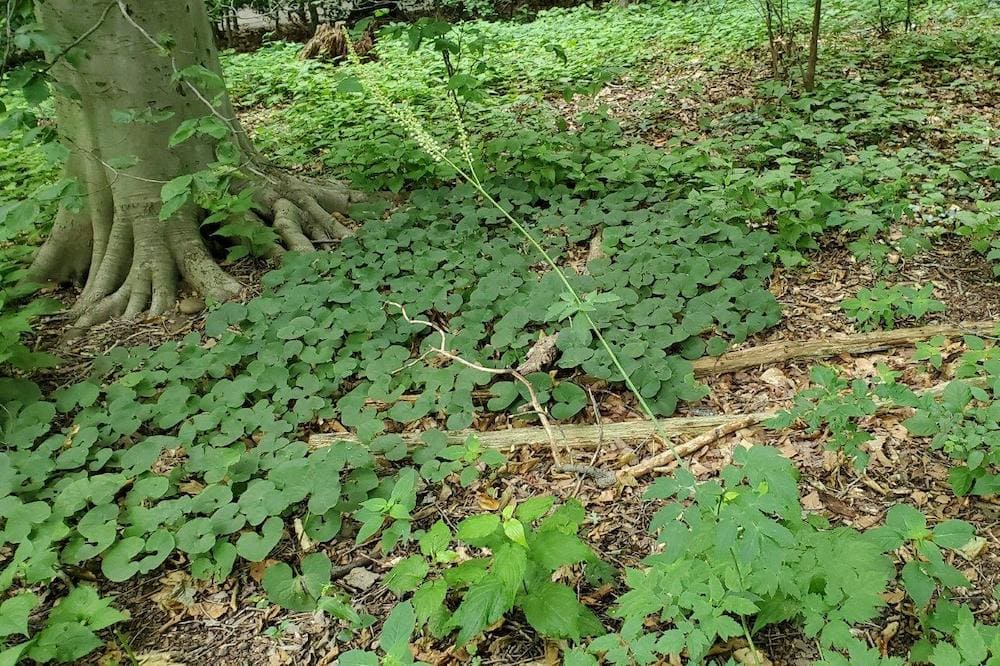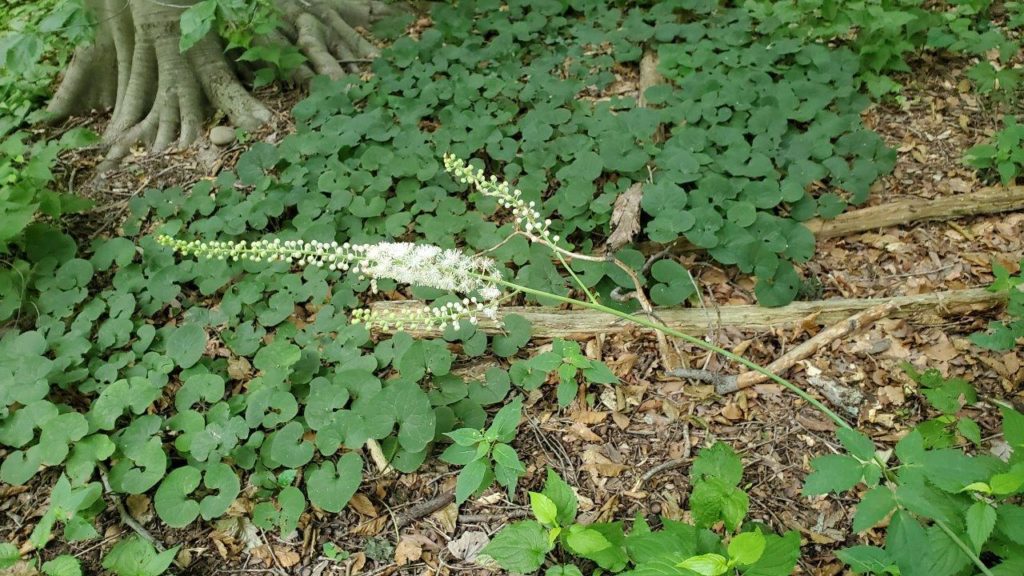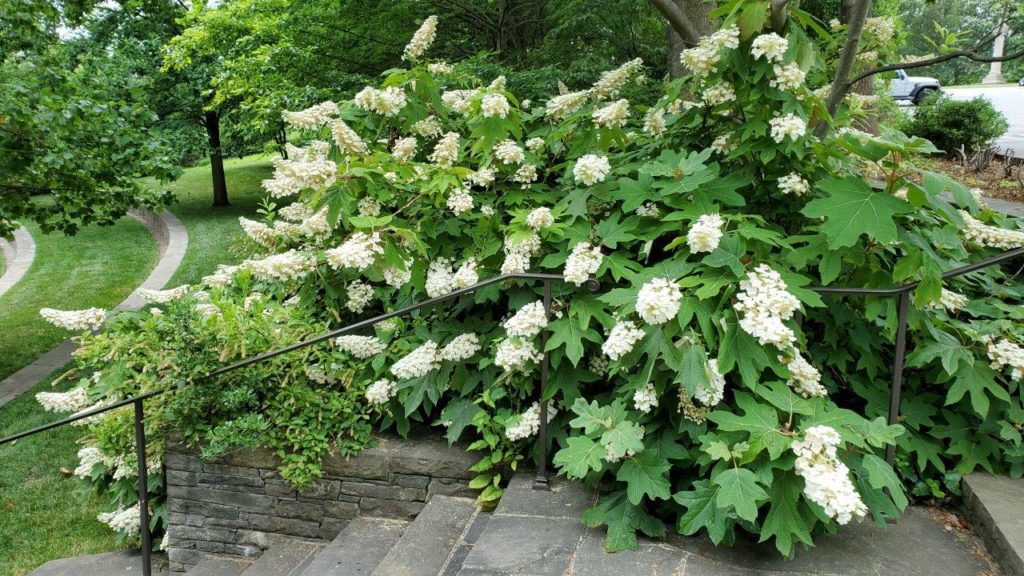June 17, 2020
Our intrepid Olmsted Woods volunteers are back at work for the first time since November

June 10, 2020
Despite the heat they were glad to be out and safely seeing each other in the midst of the pandemic. The Woods seemed quite different: no sounds of trucks or traffic, no interns, no summer camp, and lots of visitors walking and pushing strollers. Also, one red-bellied woodpecker. They weeded – finding huge garlic mustard plants as well as porcelain berry and grape vines, eunonymous, ivy, brambles, and other bad things, and filled several trash cans and black bags.

The volunteers missed seeing all the spring ephemerals and early blooming wildflowers this year, but admired a Black Cohosh (Actaea racemosa, formerly Cimicifuga) which has produced a stalk with two flower buds. Last year’s buds were destroyed by aphids, so we hope these will survive. This plant is also called Bugbane. Admire all the wild ginger in the photo!
In the garden above the amphitheater, the buds of Bottlebrush Buckeye (Aesculus parviflora) have arranged themselves beautifully. These will become more bushy when they open fully. In the photo below, two often confused wildflowers are visible in the foreground: White Snakeroot (Sanicula canadense) and White Avens (Geum canadensis). Zoom in to see the differences. White snakeroot on the left and right has a cluster of three flowers per stalk. Geum in the center has only one flower per stalk. Both will produce burs in the fall.

The volunteers reported that it was wonderful to be back in the Woods. Here’s to the great success of our 2020 season!
June 17, 2020
It was a very cool and cloudy day, quite a change from last week’s summer heat. We had a larger group of workers (including interns Maddie and Elizabeth) so we tackled a fairly large area. We spread out above the amphitheater walkway and worked our way up to the wall by the Pilgrim Road parking lot. We found a lot of ivy and many other invasives including arum, bindweed, euonymous, and garlic mustard. The work was fairly easy because the ivy came out in long runners, but some areas were very thick with desirable plants such as Christmas Fern, the native Allegheny Spurge (Pachysandra procumbens), Virginia Sweetspire (Itea virginiana) – such a nice name – and wood asters, so we had to work carefully around them. A light rain began to fall around 11:00, and not knowing whether it would get heavier, we decided to declare victory and call it a day.

Of note today was the Black Cohosh (Actaea racemosa, formerly Cimicifuga), which has not two but three flowers! One is beginning to open fully. This plant hasn’t bloomed successfully since 2016.
At the top of the stairs to the amphitheater is a gorgeous Oakleaf Hydrangea (Hydrangea quercifolia). The fragrance of all those blossoms was amazing! No wonder the amphitheater is so popular with visitors.

Thank you to Virginia Egan for documenting the progress of our Wednesday Woods volunteers and keeping us updated with what’s growing in the Olmsted Woods.


